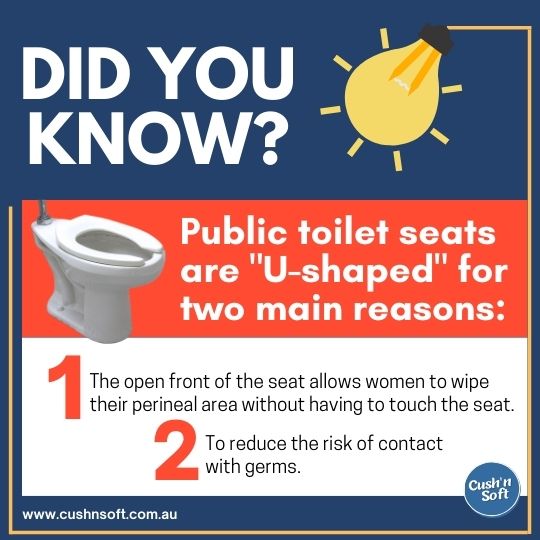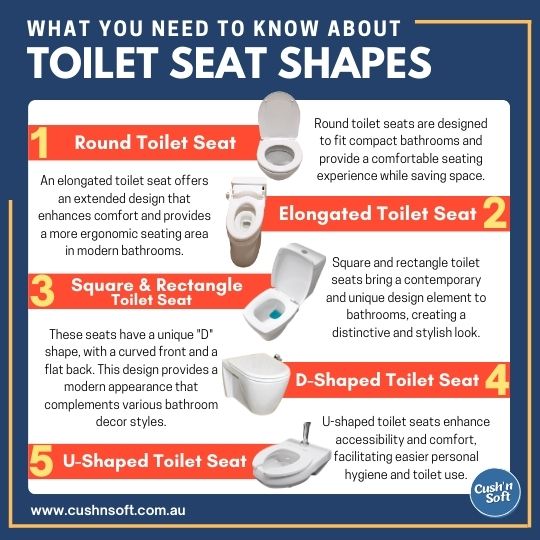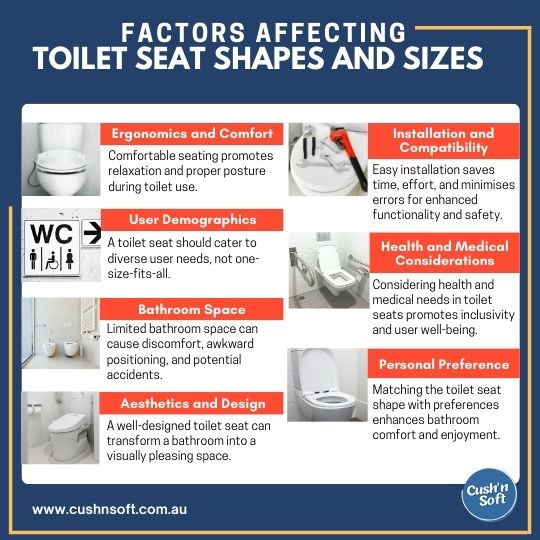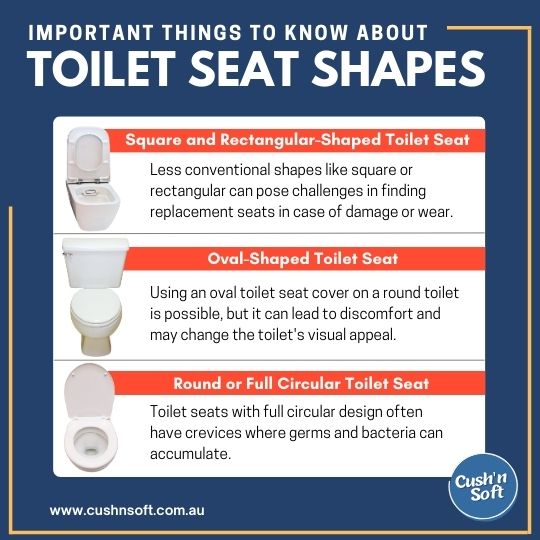When it comes to designing a comfortable and functional bathroom, every detail matters. One often overlooked yet crucial element is the shape of the toilet seat.
While many of us might not give much thought to this seemingly mundane feature, the shape of a toilet seat can significantly impact your comfort, your bathroom’s aesthetics, and even accessibility.
In this article, we’ll explore the distinct shapes of toilet seats, exploring their differences, benefits, and how to choose the best fit for your bathroom.
Toilet seats come in a variety of shapes, each offering unique advantages that cater to specific needs and preferences. From the classic round to the modern square, the shape you choose can impact comfort, aesthetics, and functionality in your bathroom.
Round toilet seats are the most basic type of toilet seat. They are small and compact, and they fit well on most toilets. Round seats are also relatively inexpensive. Their simple and classic appearance makes them a versatile option, seamlessly blending into both modern and traditional bathroom decor.
Additionally, round toilet seats are often more budget-friendly compared to elongated options, making them a cost-effective choice for those looking to upgrade their bathroom fixtures without breaking the bank.
Elongated toilet seats have gained popularity for their enhanced comfort and modern design. Unlike round toilet seats, elongated seats feature an elongated shape that provides additional seating areas, making them more accommodating and comfortable for users.
This elongated design offers better support to the thighs and provides a more spacious and relaxed seating position. The comfort and contemporary look they provide make them a popular choice for modern bathrooms seeking both functionality and aesthetics.
U-shaped toilet seats are a type of toilet seat that has an open front. This design is often used in public restrooms, as it allows women to wipe themselves without having to touch the seat. The open front makes it easier to clean the seat, and it also prevents urine from splashing back onto the user.
Additionally, U-shaped toilet seats can be more comfortable for some people, as they allow for a wider range of movement. Its design offers ample seating area and ergonomic support, ensuring a comfortable fit for users.

Square-shaped toilet seats offer a contemporary and stylish twist to traditional bathroom fixtures. As the name implies, these seats have a square or rectangular shape, which sets them apart from the more common round or elongated designs.
One of the main advantages of square-shaped toilet seats is that they take up less space than round or elongated seats. This can be a major advantage in small bathrooms or in bathrooms with limited clearance.
Square-shaped seats are particularly well-suited for bathrooms with a contemporary or minimalist aesthetic, adding a touch of sophistication to the overall decor. They are not as comfortable as round or elongated seats, but they can be a good option for people with limited space. Square-shaped seats are also sometimes used in commercial settings, such as public restrooms.
D-shaped toilet seats, also known as universal or universal-fit seats, combine the best of both round and elongated designs. Their unique shape resembles the letter “D,” with a wider back and a narrower front, making them a versatile option for any bathroom.
One of the main advantages of D-shaped toilet seats is that they are more comfortable than traditional round or elongated seats. The wider front provides more support for the thighs and hips, which can help to reduce strain on the back.
However, there are also some disadvantages to D-shaped toilet seats. They are not as common as round or elongated seats, so you may have to shop around to find one. Apart from that, installing a D-shaped toilet seat may be more complicated than installing a standard round seat. The unique shape requires precise alignment to fit properly, and if not installed correctly, it may cause stability issues or affect the seat’s longevity.

The shape and size of a toilet seat are influenced by various factors, ranging from ergonomic considerations to design preferences. Understanding these factors can help you make an informed decision when choosing the right toilet seat for your bathroom.
Here are the key factors that affect the shape and size of a toilet seat:
One of the primary factors influencing toilet seat shape and size is comfort. The shape should provide optimal support for the user’s body, especially during extended periods of use. The choice between round, elongated, D-shaped, or square seats impacts the contact area and how well the seat conforms to the user’s body.
Toilet seats are designed to accommodate a wide range of users, including adults, children, and individuals with varying physical abilities. Seats might be elongated to provide additional seating space or feature contoured shapes to ensure comfort for different body types.
The dimensions of your bathroom play a crucial role in determining the shape and size of the toilet seat. In smaller bathrooms, round or D-shaped seats might be preferred to save space, while elongated seats might be chosen for larger bathrooms with more room.
Toilet seats contribute to the overall design aesthetics of the bathroom. The chosen shape can align with the bathroom’s style, whether it’s traditional, modern, or avant-garde. Square seats, for example, can make a bold design statement.
Toilet seat shapes need to be compatible with the toilet bowl’s shape and size. Some toilet models are designed specifically for round seats, while others are designed for elongated or D-shaped seats. Choosing the appropriate shape ensures a proper fit and secure installation.
Individuals with specific health conditions might require certain seat shapes for optimal comfort. For example, people recovering from surgeries might prefer elongated seats for better support during the healing process.
Ultimately, personal preference plays a significant role in choosing the shape and size of a toilet seat. Some individuals might prioritise comfort, while others might prioritise design and aesthetics.

With various options available, the shape of a toilet seat can significantly impact your bathroom experience. Understanding the differences and how they align with your specific needs and toilet design is crucial.
Here are a few important things to know about toilet seat shapes, helping you make an informed decision for your home or commercial space:

Choosing the right toilet seat shape goes beyond mere aesthetics; it is about finding the perfect balance between comfort, functionality, and personal preferences.
Whether you opt for the space-saving round seat or the ergonomic elongated seat, remember that the shape you choose can significantly impact your daily bathroom experience.
When selecting a toilet seat, it’s essential to consider factors such as the available bathroom space, the intended users, and personal comfort preferences. By understanding the various toilet seat shapes and their advantages, you can make an informed decision that enhances both the functionality and aesthetics of your bathroom.
Feel free to get in touch with us if you have any questions about our products.
Copyright © 2024 Cush’n Soft. All Rights Reserved.